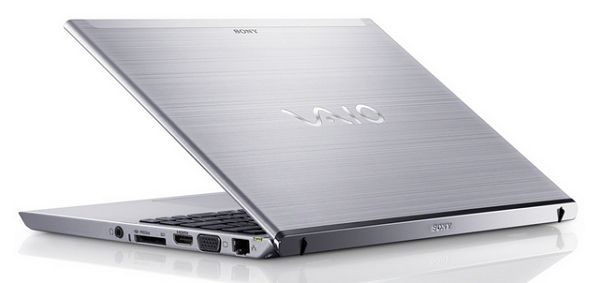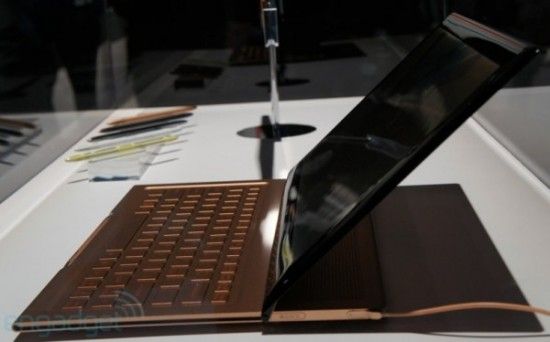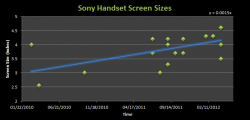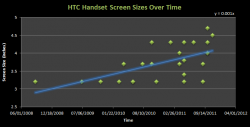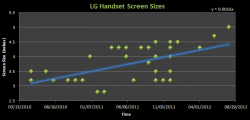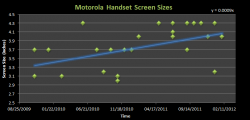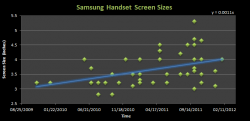Sony has announced that it will be adding a touchscreen option to the company’s first Ultrabook, the Vaio T13. According to Engadget the ‘T13-2’ can be speced up quite nicely — up to a Core i7, 256GB SSD, and 8GB of RAM. Pricing doesn’t seem to be confirmed yet, but Sony mentions somewhere in the $1600 range for the aforementioned top-end model. The non-touchscreen Vaio T13 now starts at the fair price of $739; it is unclear how much the touchscreen base model will add to this starting price. The touchscreen T13 is expected to go on sale as Windows 8 launches later this month on the 26th.
Tag Archive | "sony"

Sony VAIO Z Refreshed with Ivy Bridge Processors
Posted on 04 June 2012
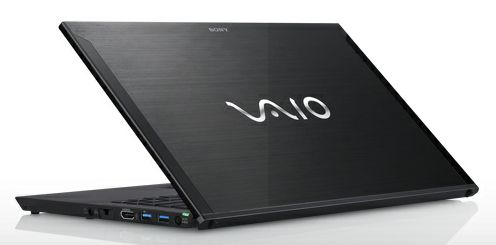 Sony’s most premium ultraportable, the VAIO Z, has finally been refreshed with Ivy Bridge processors. We watched over the last few weeks as VAIO Z stocks dwindled and Sony offered deals to get rid of the previous models. Now Sony is offering Intel’s latest Core i5 or Core i7 processors in the VAIO Z which feature the improved HD 4000 integrated graphics.
Sony’s most premium ultraportable, the VAIO Z, has finally been refreshed with Ivy Bridge processors. We watched over the last few weeks as VAIO Z stocks dwindled and Sony offered deals to get rid of the previous models. Now Sony is offering Intel’s latest Core i5 or Core i7 processors in the VAIO Z which feature the improved HD 4000 integrated graphics.

Sony Vaio T Finally Launches in the US as a Very Affordable Ivy Bridge Ultrabook, Starts at $769
Posted on 04 June 2012
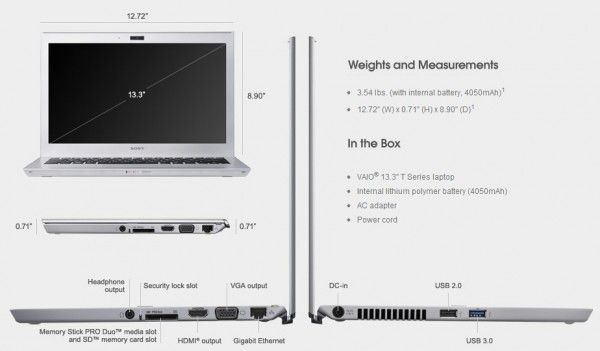 Even though we blew the lid off of the Sony’s first official entry into the Ultrabook space a few weeks ago thanks to Sony EU, Sony US has been completely silent about the VAIO T series… until now. The VAIO T launches in the US as one of the first Ivy Bridge Ultrabooks, and also at a very respectable price: $769.
Even though we blew the lid off of the Sony’s first official entry into the Ultrabook space a few weeks ago thanks to Sony EU, Sony US has been completely silent about the VAIO T series… until now. The VAIO T launches in the US as one of the first Ivy Bridge Ultrabooks, and also at a very respectable price: $769.

Looking for an Ultrabook with Ports? Here’s Six Well Endowed Ultrabooks
Posted on 24 May 2012
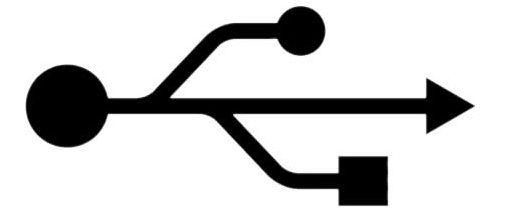 Ultrabooks a sleek and slim by design. Unfortunately, thickness often has an inverse relationship with number of ports. For many, the Ultrabook is an attractive possibility, but not entirely practical without a decent set of ports. This is not the case for all Ultrabooks, however, and here are six solid suggestions if you need a good portfolio of ports on your Ultrabook.
Ultrabooks a sleek and slim by design. Unfortunately, thickness often has an inverse relationship with number of ports. For many, the Ultrabook is an attractive possibility, but not entirely practical without a decent set of ports. This is not the case for all Ultrabooks, however, and here are six solid suggestions if you need a good portfolio of ports on your Ultrabook.

Sony VAIO T Ultrabook Photo Gallery (T11 and T13)
Posted on 07 May 2012
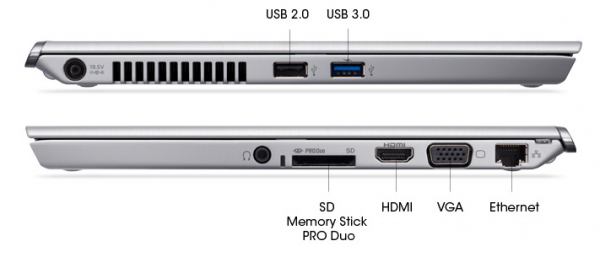 Sony surprised us last week when they finally jumped into the Ultrabook market with the VAIO T series. Shortly thereafter we got confirmation the T series would also be offered with the next-gen Ivy Bridge CPU, which I’m particularly excited about given that Intel says the HD4000 graphics will be twice as fast as the existing generation of Sandy Bridge Ultrabooks.
Sony surprised us last week when they finally jumped into the Ultrabook market with the VAIO T series. Shortly thereafter we got confirmation the T series would also be offered with the next-gen Ivy Bridge CPU, which I’m particularly excited about given that Intel says the HD4000 graphics will be twice as fast as the existing generation of Sandy Bridge Ultrabooks.
I’ve scoured the web for the best photos of the VAIO T series (T11 and T13 specs) that have yet been released. Here’s a high-res gallery of the slick looking Ultrabooks:
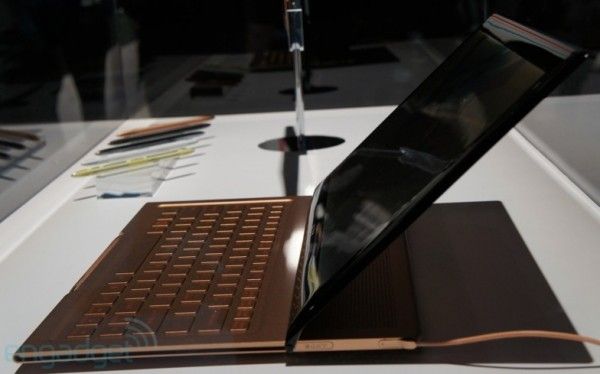
Sony Appears to be Working on a New U-series Hybrid Tablet With Windows 8
Posted on 17 March 2012
Back during CES, Sony was showing off a hybrid tablet with Windows 8. This was a sliding design that could function as a tablet with the screen down, or the screen could slide up screen up to reveal a full QWERTY keyboard.
Image credit: Engadget
We’ve seen a similar approach from Samsung, but despite an official press release about the product, it never made it to market (perhaps they were waiting for Windows 8?). Asus launched the Eee Pad Slider last year using the same concept but with the Android and ARM platform instead of Windows. The Asus Slider was highly anticipated, but didn’t seem to make a major splash within the Android market.
 Sony’s concept hybrid device was decidedly a prototype as shown off at CES, but a purportedly leaked advertisement, spotted by Pocket Now, shows a very similar device that looks much closer to a retail launch. The ad also places the hybrid tablet under the U-series, which Sony has always reserved for it’s most portable computers. Cousin of the U-series is the UX-series under which Sony offered it venerable UX UMPC.
Sony’s concept hybrid device was decidedly a prototype as shown off at CES, but a purportedly leaked advertisement, spotted by Pocket Now, shows a very similar device that looks much closer to a retail launch. The ad also places the hybrid tablet under the U-series, which Sony has always reserved for it’s most portable computers. Cousin of the U-series is the UX-series under which Sony offered it venerable UX UMPC.
In the ad you can see a USB port on the right side of the device, a front facing camera at the top right of the bezel, a home button of sorts on the left side of the bezel, mouse buttons in front of the keyboard (with the middle key likely for scrolling), and a nub-mouse in the center of the keyboard.
Prior to Windows 8 I would have been less enthusiastic about a hybrid device from Sony, but now that Windows 8 has a chance of providing a good tablet experience, the hybrid design is much more appealing. Hopefully we’ll hear more about this device as Windows 8 gets closer to retail launch.
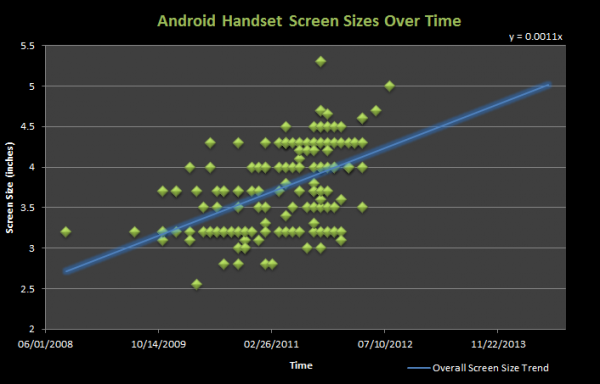
Report: Smartphone Screens Growing over Time, 5? Screens the Norm by End of 2013
Posted on 08 February 2012
I’ve been following a disturbing trend over the last few years as the Android platform (and now WP7 as well) matures. Smartphone screen sizes just keep growing and growing, and they don’t seem to want to stop. I have a number of issues with smartphones that have overly-large screens. It pains me to see that, while Android is known for giving users many choices, it’s nearly impossible to get a reasonably-sized flagship phone. For me, for a smartphone to be a ‘smartphone’ at all, and not a tablet, it has to be easily usable with one hand. Of course then the definition of smartphone/tablet will change from person to person, because our hands are not all the same size, however, there is certainly a finite limit for everyone where a phone will become too big to be comfortably used with one hand.
I’m currently testing the Samsung Galaxy Nexus. So far it’s been a rather wonderful phone, and I recently wrote this on Google Plus:
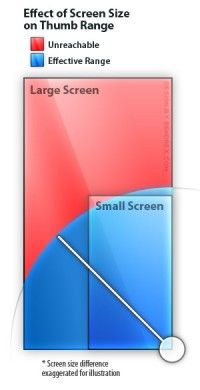
I’ve been using the iPhone for 3 generations. Right now I’m testing a Galaxy Nexus. If they made the same exact phone in a size that’s actually comfortable for one-hand use, I might call myself an Android convert. Curse you 4″+ screens and the awful fad that you are!
For me, the 4.65″ screen on the Galaxy Nexus is just too big. I constantly have to shuffle the phone around in my hand because Android places the two most frequently used aspects of the interface (the menu buttons and the notification drawer) at opposite ends of the phone. The size of the phone and the required shuffling means that I’ve got a poor grip on it, and I’ve been rather worried about dropping it during use. Again, those with larger hands will not have the same issue at 4.65″, but at some point they will run into the same problem.
Android Handset Screen Size Over Time
To show the trends of Android smartphone screen sizes over time, I compiled screen size and release date data from 155 smartphones from five major manufacturers (Motorola, Samsung, HTC, Sony, LG). I’d like to thank PDADB.net for their comprehensive release date info. (click to enlarge graphs)
As you can see, since the introduction of the 3.2″ HTC Dream / G1, screen sizes have consistently increased. Today we’re seeing 4″, 4.5″, 4.7″, 5″, and even 5.3″ smartphones! A simple projection (seen on the main chart) suggests that before 2013 is out, many handsets will have 5″ screens, while the flagship phones of that time may have even larger screens (if this trend continues) of 5.5″ or perhaps 6″.
With a slope of 0.0016, LG is increasing its Android smartphone screen sizes the most rapidly of these five manufactures. Despite pioneering some of the largest phones on the market at certain points in the timeline, Motorola is actually showing the slowest rate of increase in Android smartphone screen size with a slope of 0.0009, but of course this isn’t very far off from the leader!
Why is This Happening?
A good question to ask is what’s prompting the growth in screen size. It seems natural for manufacturers to have experimented with screen sizes as the platform grew legs. Different screen sizes are a point of differentiation for an Android phone manufacturer — a way to stand out in a sea of similar options. Bigger screens were also an easy way for companies to try to beat out the iPhone on features, even if the ‘bigger is better’ argument doesn’t hold much water in this case. Now it seems to have turned into a snowball effect whereby manufacturers are trying to one-up each other to have the biggest screen in town (all the while, Apple has stuck with 3.5″ since the introduction of their handsets). You wouldn’t believe how many times I’ve heard the phrase “biggest and baddest” when marketers are referring to a new Android phone. They use this phrase as though bigger is always better, but I must say — when it comes to comfortable one-handed smartphone use — it is not.
Where Does It Stop?
My question is this: where do we draw the line? As I mentioned, despite variations in hand sizes, everyone reaches a limit of comfortable one-hand usability at some point. I don’t have the raw data to back it up, but I believe that Android smartphone screen sizes are rapidly surpassing the maximum size for comfortable one-handed use by the average Android customer. None of this is to say there aren’t advantages to having a larger screen (particularly when it comes to media viewing), but given that people much more frequently use their smartphones for apps rather than media viewing, the argument for surpassing a users one-handed comfort zone to provide a better media experience is a poor one.
It’s not so much that screen-sizes are increasing (the chart clearly shows that other sizes are still available), but the bothersome fact is that it’s near-impossible to get a flagship phone unless you’re willing to buy one of the massive phones on the market. If you want a phone that comes in a size that’s comfortable for one-handed use, you have to be willing to settle as a second-class Android citizen — the only options available to you will likely have slower processors, less RAM (and may be based on an older platform) than the newest and biggest flagship phone currently on the market.

11 Companies with Ultrabooks This Christmas, Including Sony
Posted on 20 October 2011
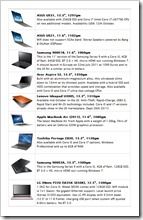 In a Fox News TV segment (embedded below) the Ultrabook gets a very important airing with Intel CEO Paul Otellini along with commentary that made me sit up and listen. In–line with an interview we did early in September [5 more Ultrabooks coming], Paul says that there will be 11 companies offering Ultrabooks this Christmas, including Sony.
In a Fox News TV segment (embedded below) the Ultrabook gets a very important airing with Intel CEO Paul Otellini along with commentary that made me sit up and listen. In–line with an interview we did early in September [5 more Ultrabooks coming], Paul says that there will be 11 companies offering Ultrabooks this Christmas, including Sony.
OK, Let’s count them. We’ve got Acer, Asus, Lenovo and Toshiba on board already. We believe that HP will have an offering in 2011 too. Add the revelation that Sony will offer a solution and you’re left with 4 missing from the list. Let’s assume Intel are pushing the boundaries out to include the Samsung Series 9 and the LG Xnote. Where are the other two coming from? Choose from MSI, Gigabyte (we believe that’s a 2012 product) , Fujitsu, Dell (also believed to be a 2012 product), Packard Bell and possibly some re-brands.
Paul went on to say that there were 60 designs in the pipeline that will launch with Ivy Bridge. That’s something to look forward to in Q2/Q3 2012 but surely he means SKUs. I can’t see 60 different designs being launched. If they are we’re going to nee help with the Ultrabook database!
 |
| |||
 |
| |||
 |
| |||
 |
| |||
 |
| |||
 |
| |||
 |
| |||
 |
| |||
 |
| |||
 |
|

